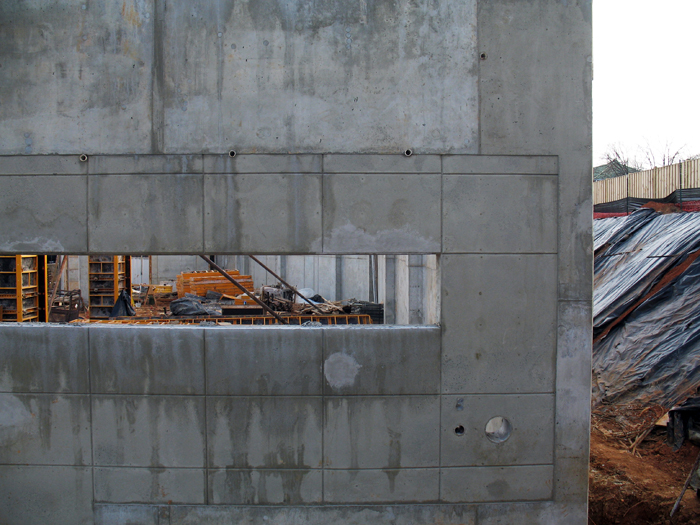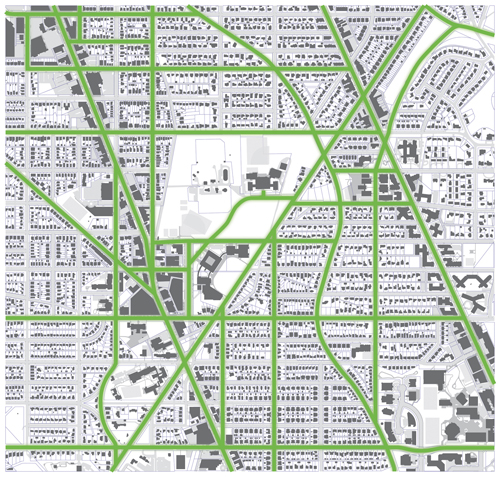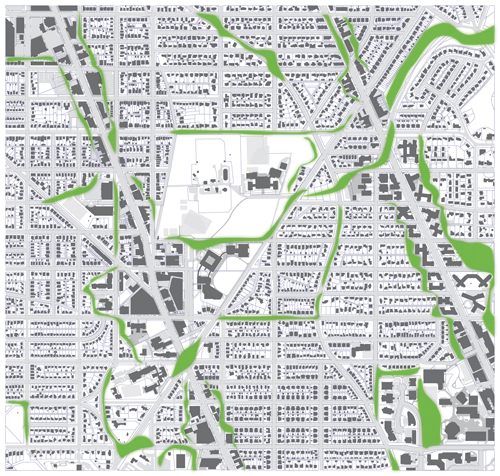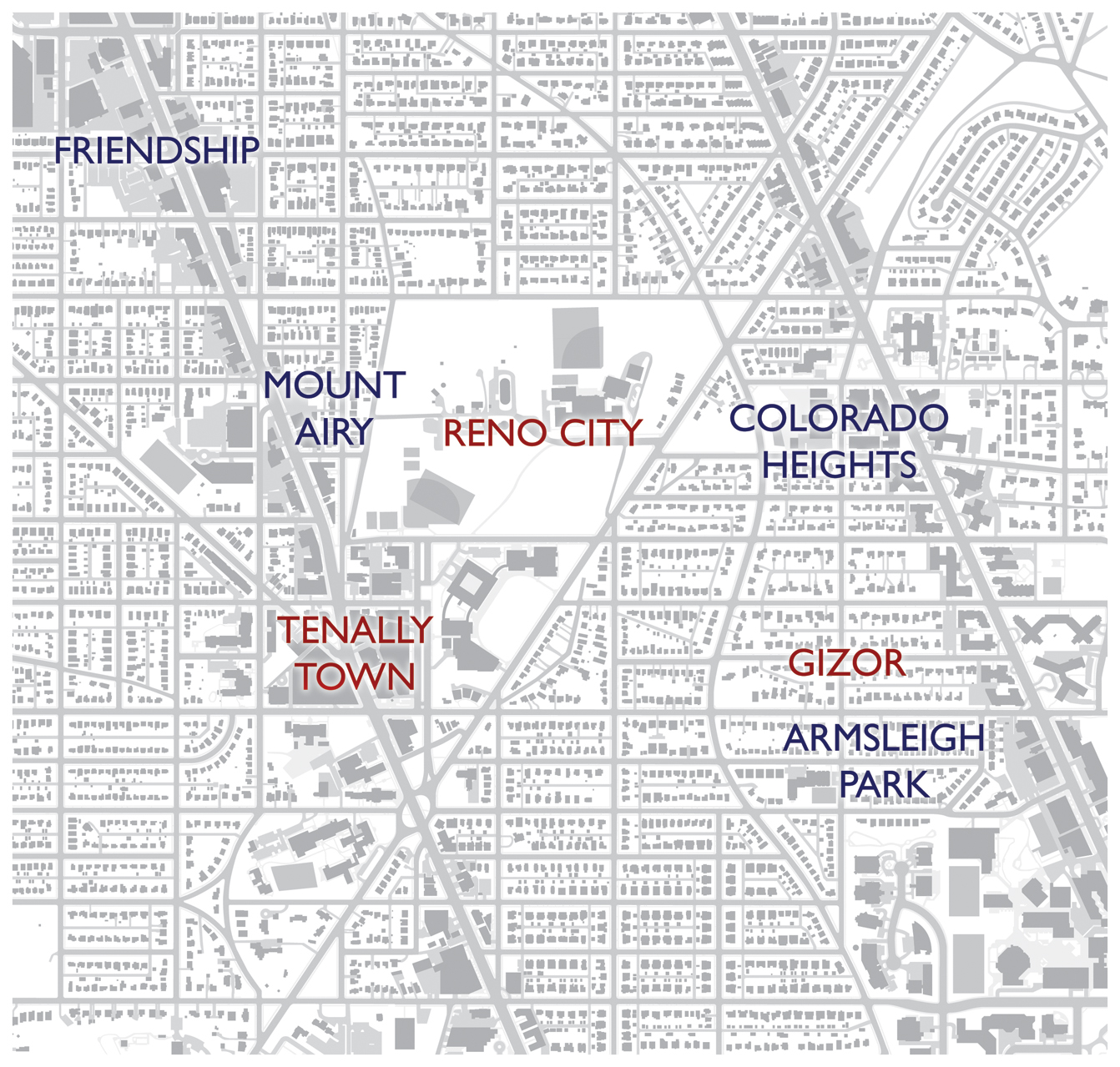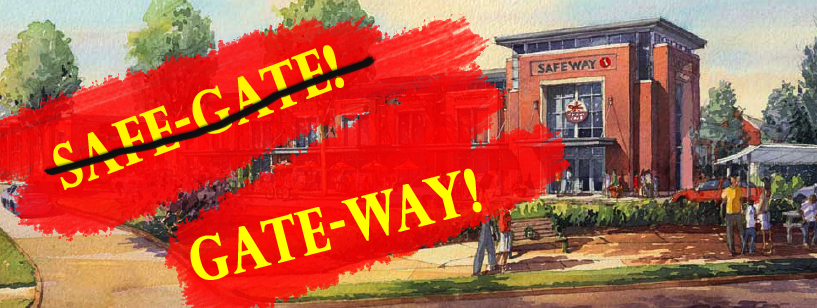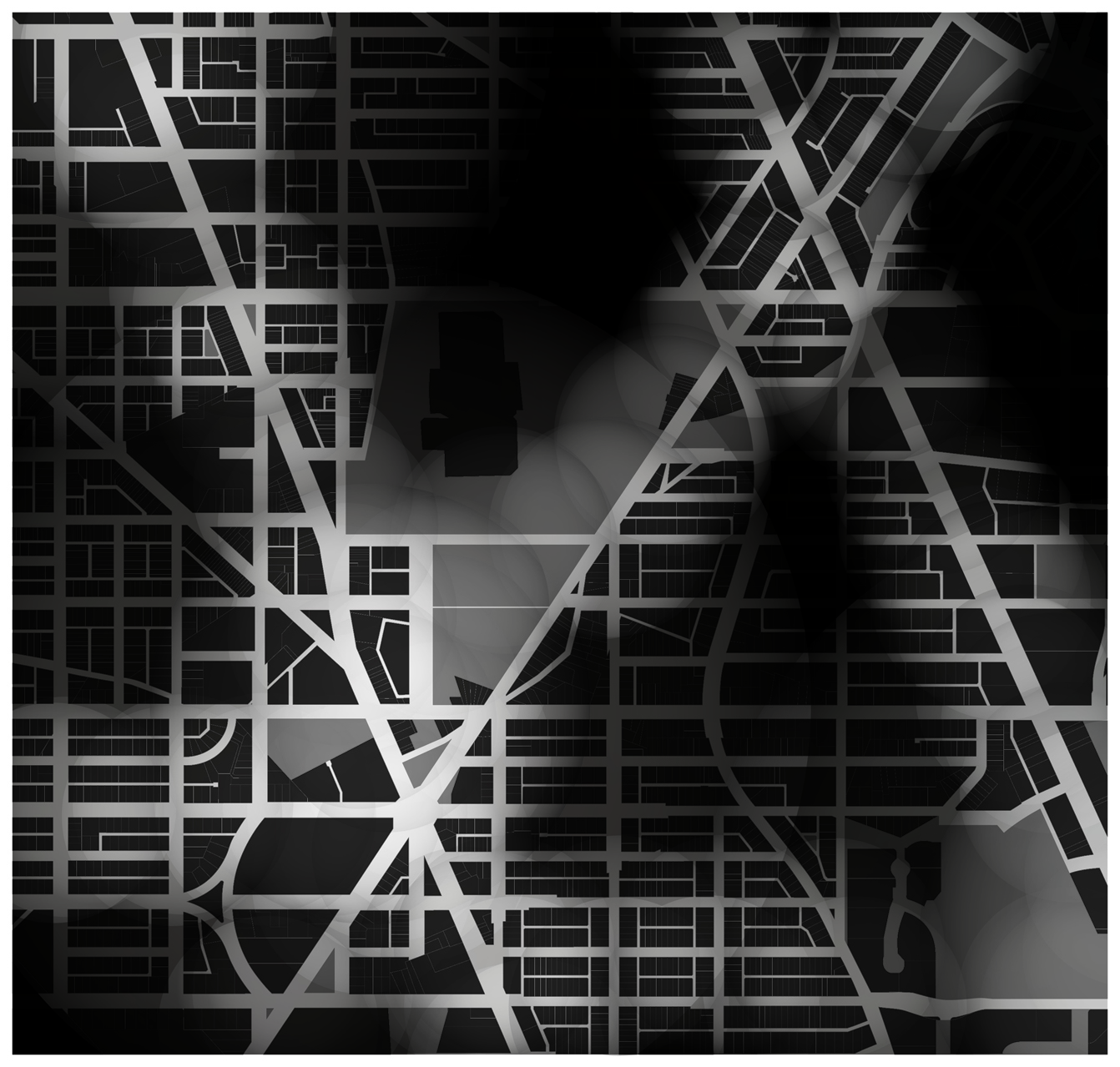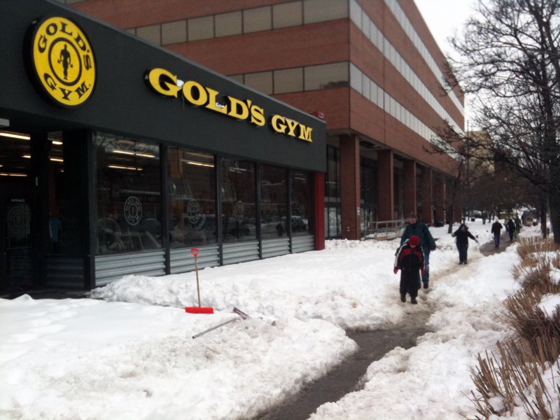
The past few days, I’ve been bothered by the failure of this Gold’s Gym at 4310 Connecticut Avenue. Although they shoveled a path from the Van Ness metro to their door, they decided to not shovel any further. The path is used heavily by pedestrians of all age groups. Lingering there for about five minutes, I saw around ten people falter and otherwise walk delicately.They were lazy during the first SnOMG, and they’ll probably be lazy and negligent this time around. UPDATED BELOW
Perhaps what is most infuriating is that the building exclusively employs fit and strong people, who can clearly see the havoc they’re wreaking right out of the huge plate glass window in front. Hell, all the people trying to get fit through absolutely non-productive activities could be getting exercise and simultaneously preventing negligence. It is, after all, illegal to not shovel your walk:
“It shall be the duty of every person, partnership, corporation, joint-stock company, or syndicate in charge or control of any building or lot of land within the fire limits of the District of Columbia, fronting or abutting on a paved sidewalk, whether as owner, tenant, occupant, lessee, or otherwise, within the first 8 hours of daylight after the ceasing to fall of any snow or sleet, to remove and clear away, or cause to be removed and cleared away, such snow or sleet from so much of said sidewalk as is in front of or abuts on said building or lot of land.” (D.C. Code § 9-601)
But that’s not good enough if scofflaws just get fined weeks from now. People could get injured, and people sure are getting inconvenienced. But residents should have recourse besides whining to the government or bitching on listservs. I think we can take the cleanup and retribution into our own hands.
So, I’m organizing the First Tenleytown Volunteer Snow Removal Battalion.The plan is to form a band of husky citizens to clear off snow from spaces that suffer from negligence or the tragedy of the commons. We’ll counter common neglect with community action. We will primarily clear the mounds of plowed snow at street corners and bus stops, but we will also remediate careless private plowing and people who don’t plow at all. Call me altruistic if you want but I intend to share the businesses that don’t shovel or plow right into pedestrian areas on this blog. I hope to punish them with a boycott, which could cost more than any fine ever would.
We’re going to meet up tomorrow afternoon at 4PM at the Tenleytown Metro station. ANC overlord Jon Bender has made it into a snowball fight as well, so uh, come for the fun and stay for the hard labor. Bring a shovel and a flask if you care. There’s no reason fun can’t have a good social outcome.
If you want more details, my rant and the followup posts are linked here.
Update: Tuesday afternoon, Gold’s Gym finally cleared their snow, sources say, after a neighborhood woman tore the manager a new one. Because the snow had been compacted, a bevy of strapping young men were witnessed chiseling the brownish ice apart. Sources report that they “felt the burn.” Many thanks to the woman. Hopefully Gold’s will not let this happen again.
